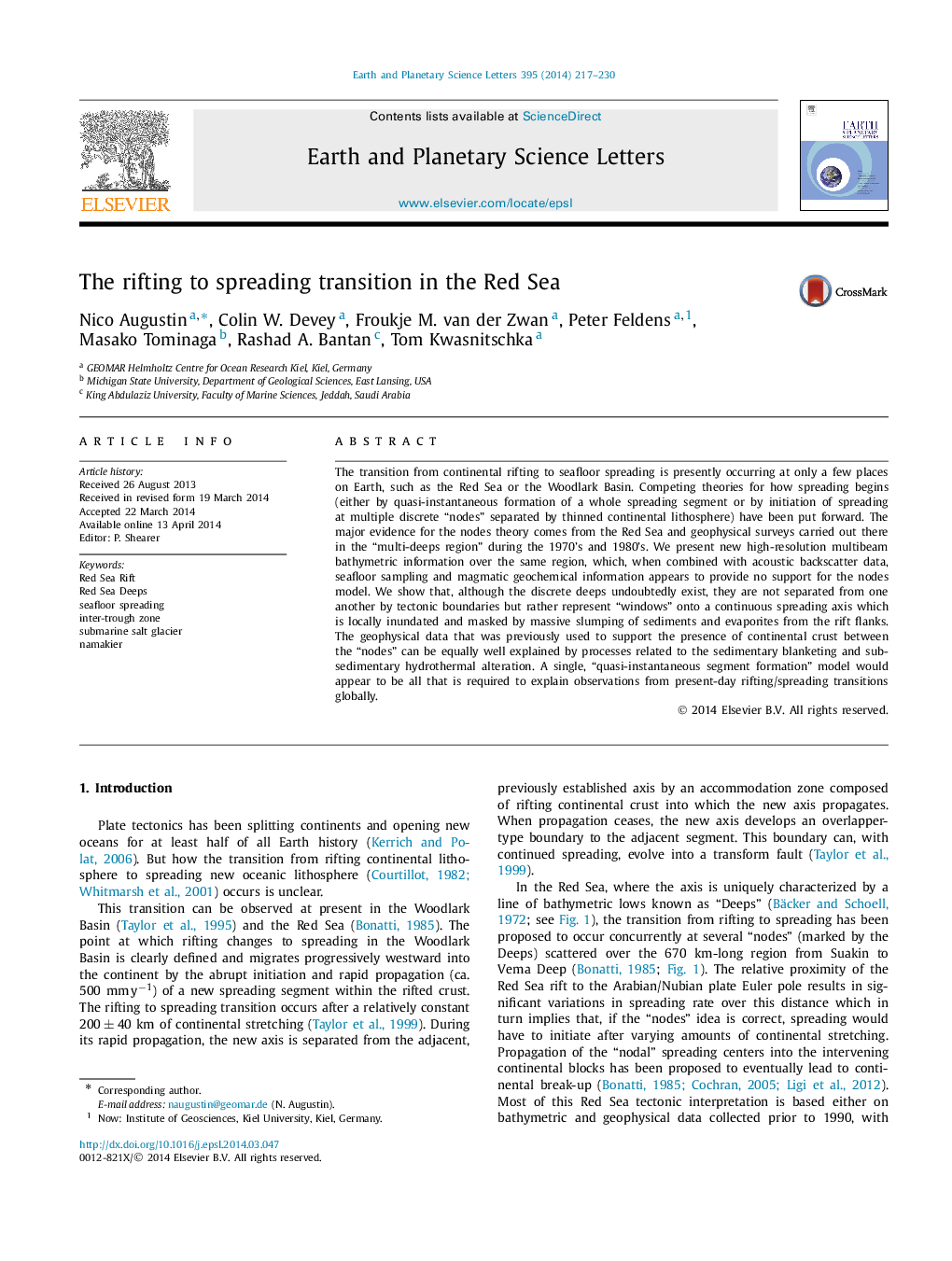| کد مقاله | کد نشریه | سال انتشار | مقاله انگلیسی | نسخه تمام متن |
|---|---|---|---|---|
| 6429291 | 1634761 | 2014 | 14 صفحه PDF | دانلود رایگان |
- The Red Sea Rift (RSR) comprises the typical terrain of slow MOR axes seen elsewhere.
- Submarine salt glaciers occur extensively along the RSR and blanket parts of the RSR.
- Inter-trough zones are not continental, but oceanic crust covered by evaporite flows.
- We see a global mechanism for spreading initiation and no need for a “multi node” model.
- We see prospects for large mineral deposits at passive margins that host evaporites.
The transition from continental rifting to seafloor spreading is presently occurring at only a few places on Earth, such as the Red Sea or the Woodlark Basin. Competing theories for how spreading begins (either by quasi-instantaneous formation of a whole spreading segment or by initiation of spreading at multiple discrete “nodes” separated by thinned continental lithosphere) have been put forward. The major evidence for the nodes theory comes from the Red Sea and geophysical surveys carried out there in the “multi-deeps region” during the 1970's and 1980's. We present new high-resolution multibeam bathymetric information over the same region, which, when combined with acoustic backscatter data, seafloor sampling and magmatic geochemical information appears to provide no support for the nodes model. We show that, although the discrete deeps undoubtedly exist, they are not separated from one another by tectonic boundaries but rather represent “windows” onto a continuous spreading axis which is locally inundated and masked by massive slumping of sediments and evaporites from the rift flanks. The geophysical data that was previously used to support the presence of continental crust between the “nodes” can be equally well explained by processes related to the sedimentary blanketing and sub-sedimentary hydrothermal alteration. A single, “quasi-instantaneous segment formation” model would appear to be all that is required to explain observations from present-day rifting/spreading transitions globally.
Journal: Earth and Planetary Science Letters - Volume 395, 1 June 2014, Pages 217-230
